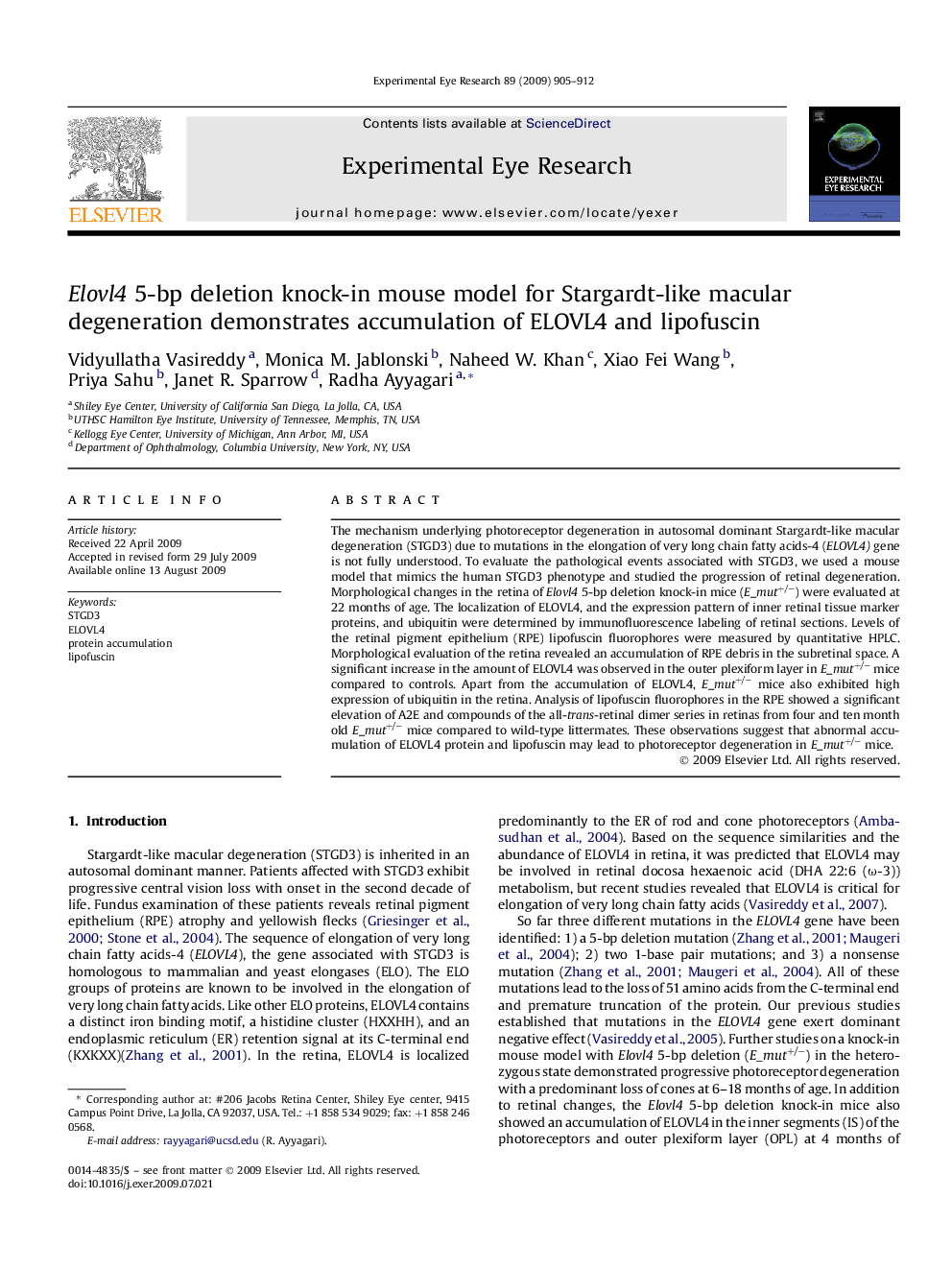| Article ID | Journal | Published Year | Pages | File Type |
|---|---|---|---|---|
| 4012007 | Experimental Eye Research | 2009 | 8 Pages |
The mechanism underlying photoreceptor degeneration in autosomal dominant Stargardt-like macular degeneration (STGD3) due to mutations in the elongation of very long chain fatty acids-4 (ELOVL4) gene is not fully understood. To evaluate the pathological events associated with STGD3, we used a mouse model that mimics the human STGD3 phenotype and studied the progression of retinal degeneration. Morphological changes in the retina of Elovl4 5-bp deletion knock-in mice (E_mut+/−) were evaluated at 22 months of age. The localization of ELOVL4, and the expression pattern of inner retinal tissue marker proteins, and ubiquitin were determined by immunofluorescence labeling of retinal sections. Levels of the retinal pigment epithelium (RPE) lipofuscin fluorophores were measured by quantitative HPLC. Morphological evaluation of the retina revealed an accumulation of RPE debris in the subretinal space. A significant increase in the amount of ELOVL4 was observed in the outer plexiform layer in E_mut+/− mice compared to controls. Apart from the accumulation of ELOVL4, E_mut+/− mice also exhibited high expression of ubiquitin in the retina. Analysis of lipofuscin fluorophores in the RPE showed a significant elevation of A2E and compounds of the all-trans-retinal dimer series in retinas from four and ten month old E_mut+/− mice compared to wild-type littermates. These observations suggest that abnormal accumulation of ELOVL4 protein and lipofuscin may lead to photoreceptor degeneration in E_mut+/− mice.
